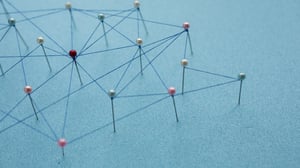DataOps, short for Data Operations, has become a mature part of the data analytics pipeline. This is the process to improve quality and reduce data analysis cycle time. DataOps techniques apply throughout the data lifecycle, from data preparation to reporting, enabling the interconnected nature of data analytics teams and IT operations. Most of all, DataOps has become an automated process. Currently there’s automated software in charge of monitoring incoming and stored data in an enterprise system. These systems provide notifications, anomaly detection, and in the case of Dataiku, anywhere access through the cloud.
Removing Repetition in the Data Pipeline
Most of the steps in DataOps involve repetitive tasks. Where we previously had a team of data analysts and developers collecting, cleaning, and setting up data through the ETL process, now this is automated. The whole process from end to end can be achieved with tools like Automation and AutoML from Dataiku. Repetition can be removed with a chain of procedures that create notifications if there are any changes or anomalies. These automated processes can be set up in accordance with the DataOps procedures of promoting collaboration, orchestration, quality, security, access, and ease of use.
In Dataiku, the data pipeline is easily connected and available for both technical and non-technical users. Organizing a data pipeline for data transformation, preparation, and analysis is essential for production-ready AI projects. Top AI tools like Keras and Tensorflow are also available. In Dataiku, everything is organized by project. Project collaboration is part of the core pillars of the DataOps methodology.
Dataiku’s Visual Flow makes it easy for programmers and non-programmers to navigate the data pipeline. Common programming technologies like Python and R can be integrated through plugins for the technical users. The plugins can also be developed and integrated as custom tools into Dataiku. Tools like Git are also integrated into the AutoML interface.
Dataiku centers all work around visual flows. These are accessible to every stakeholder user. It is through Visual Flows that users can process and transform data, build predictive models and customize all process to reduce repetition.
Benefits of Automating DataOps
Dataiku and similar data analytics tools can automate the process pipeline. These tools provide services like integrated data interfaces. Each service comes with pros and cons.
Organizing the Pipeline
The first benefit of using cloud services like Dataiku is full transparency of the data pipeline. In Dataiku this is called a Visual Flow. This interface provides access to all users into viewing and transforming all parts of the data pipeline. For example, Projects are modules containing a visual flow. These is the hub for all data and functions and contains the dashboards available to all users. This type of functionality supports the collaboration and access pillars of DataOps.
The DataOps pillar of orchestration is controlled by Visual Flows. It is here that data is transformed, prepared, and analyzed for production-ready AI projects. Visual Flows are contained inside Projects and allow for customization and complexity.
Data Integrity and Security
Data comes into a system, gets processed, and an output is generated. Anywhere along the pipeline anomalies occur. Anomaly detection is an built-in feature of Dataiku that automates the security pillar of DataOps. This is done by automatic constraints of the system to check for data changes or customized anomaly detection settings for all parts of the data processing pipeline.
AI and Automation
Loading and processing data, conducting batch scoring operations, and other repetitive tasks are all part of running AI programs. Scenarios and triggers in Dataiku automate repetitive tasks by scheduling them for periodic execution or triggering them based on conditions.
Production teams can manage more projects and scale to deliver more production AI projects with automation in place.
Automatic Data Integrity
The repetitive process of data collection, cleansing and computing can become some of the most time-consuming tasks for an analytics team. With Dataiku Visual Flows, it’s possible to automate the whole process. The concern is that data changes constantly and these unexpected situations must be monitored. In Dataiku, Flow elements can be set to automatically detect anomalies. New values are compared to previous ones and notifications created on new changes. Any process out of the ordinary, in odd timeframes and with unexpected results will create errors prompting investigation.
Technical Programming Environments
There are many programming languages available for ML but the most common are Python and R. The most common libraries like Tensorflow and Keras can also be easily integrated into Dataiku. Code environments like Visual Studio can also be used alongside the Visual Flows when creating AI models.
When it comes to data analytics it’s important to understand DataOps and how it should operate in your enterprises. Its core pillars have evolved and are now available as automated tools. Understanding how these fit together provides fast, secure, and extensible benefits for your data analytics projects.
Want to see this come to life? Check out this case study showcasing how efficiency and data solutions go hand-in-hand.



